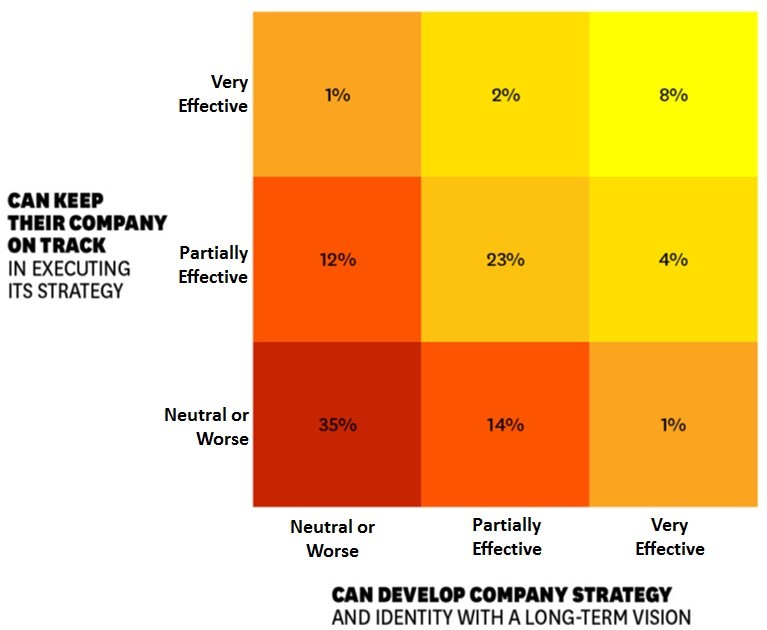
Rob Munro, Senior industrial fellow at Boost & Co member, The Institute for Manufacturing at the University of Cambridge, looks at the different uses of business strategy.
James is a CEO for a £18m equipment manufacturer supplying the New Nuclear sector and is charged with creating new momentum into its product pipeline. With the uncertainty surrounding investment and technologies, how can he increase the chances of success?
Caroline is an entrepreneur owner of a growth SME in the UK electronics sector and is planning to launch new satellite tracking technology for driver-less vehicles. Being able to clearly articulate the commercial gains to investors will help secure the funding she needs to go live in 12 months.
David is Business Development Director at a SME tier 1 rolling stock supplier to rail and wants to jump on the 10%pa growth opportunity. He’s juggling make / buy / acquire decisions which must be made in the next 4 months.
What do they have in common? Too many businesses have a weak business strategy that may well lead them to failure. Only 8% of business leaders are good at both strategy formation and its execution - at least according to Paul Leinwand’s article in a recent piece for Harvard Business Review. And most - 63% - were rated as neutral (or worse) on developing or executing business strategy.
This resonates with me. I’ve been in my fair share of “business strategy” meetings in companies that should have known better. Every year the invited would be subjected to an off-site strategy day to develop or test plans. These events were unfocussed, without process and lacking real energy. How much does anyone really want to be in those kinds of meeting?
Too many companies think they are running a strategy process when in fact they are not. Let’s unpack what can go wrong and discover the root failures of strategy. First, although there was lots of intelligent sounding talk by and among clever people, there was little analysis and no real coordination of execution. Second, no decisions were made about where resources would be spent (or not).
High on bluster - but low on details. Third, the effect of people attending after three years of these was to demotivate and make it almost certain that strategies would fail. Like Sisyphus, sentenced for eternity to continue to roll his rock up and down the hill with no purpose.
Let’s start at the beginning – what exactly is a strategy? You can define a strategy as “a method or plan chosen to bring about a desired future, such as achievement of a goal or solution to a problem.” But another problem that comes with creating and delivering strategy, is that it can involve significant effort.
Henry Mintzberg, one of the fathers of strategic thinking put it like this - “There is perhaps no process in organizations that is more demanding of human cognition that strategy formation.”
What does strategy need to contain or think about? Effective strategy is rather like layers of an onion: Business strategy comprises product and technology strategy, manufacturing strategy, marketing strategy, sales and distribution strategy, HR strategy the basis of competition and so on. Or, like the structure of a spider’s web, it weaves and touches every part of the organization and should help its people understand what the need to do every day - and stop doing for that matter.
The Strategic Failure Problem It’s been quite a few years since those strategy meetings. And so, let’s dive a bit deeper for the root-cause reasons strategy failings. You can see from the graphic below, that it appears that most strategy is not fully realized. Either it’s the planning that is unsuccessful or it’s the execution, or some combination of both.
There are three strategy failure “types” – those that can be characterized by their strategy development / execution abilities.
Type C: “The Laggards” – 63% of execs: Are neutral or worse at development or execution. But perhaps it’s not surprising: If Henry Minzberg is right – it’s challenging to create strategy and its arguably more challenging to deliver it as intended!  So, what’s behind the failure of strategy?
So, what’s behind the failure of strategy?
 Failing No 5: “Failing to Execute” … and having made those decisions about what to do, and what to stop doing, the hard work starts. Execution projects can be complicated and easily get off track but as we were reminded by the CEO in those strategy sessions, “You gotta execute!” If you’re not yet convinced, there are other ways of looking at this.
Failing No 5: “Failing to Execute” … and having made those decisions about what to do, and what to stop doing, the hard work starts. Execution projects can be complicated and easily get off track but as we were reminded by the CEO in those strategy sessions, “You gotta execute!” If you’re not yet convinced, there are other ways of looking at this.
Maybe it’s because Leaders do not embody or “operationalise the strategy” and it remains “pie in the sky.” Strategy must “translate into daily actions that guide people every day” as Starbucks CEO Howard Schultz puts it in his book Pour Your Heart into It. And sufficient resources must be devoted to the most critical capabilities and the value proposition they support.
There is Another Way… What if you could engage your business team in a lean and effective business strategy process that is rigorous and rapid? And what if it was much more likely to stick, embed and succeed.
We also need to recognise that businesses are in different places when it comes to their business strategy. Some may have no strategy at all. Or they might have a strategy but it’s not effective for them and lets down the potential of the company. Some companies may have a decent strategy, but time moves on and business conditions and technologies change.
We need a solution. The Institute for Manufacturing at Cambridge University have developed solutions for each of these situations. In the first case, the business without strategy, we advise starting with a business diagnostic to prioritise the strategic options. This can reveal significant holes in their business which need to be attended to at once, even before any strategy is developed.
In the case where strategy exists, but is not firing on all cylinders, we need to take a fresh look at the options and possibilities for the business. Our strategy workshops typically run over 4 – 6 weeks and generate renewed focus and energy for the strategy.
The IfM’s approach to strategy development is academically underpinned and rigorous with no waste of time, effort and energy. In the case of the company where no strategy exists, after the prioritization diagnostic is done, we facilitate several designed workshops to engage the strategic players in the company. This creates a tight and well-underpinned rationale of investment in highly defined strategic projects. The outcome is that the strategy is “stickier” and more likely to succeed in the long term.
Situations where the Strategic Toolkit has been used…
What are the Results? A result is enhanced engagement and better strategy with greater longevity. And better strategy links directly to better business results at the bottom line with twice as many companies in the best performing categories using strategy tools.
By the design of the strategy process, we get more and better options for using new technologies. The process is not an easy ride – it is very much designed to challenge and ultimately get better results and it focuses idea generation on real and tangible opportunities.
Do you need to review your Strategy?
The following questions could be helpful if you are considering a strategic review,
Boost Business Lancashire has a wide range of support programmes available for businesses looking to grow. To discuss any of these programmes further, contact us on 0800 488 0057.







The website uses cookies.
Some are used for statistical purposes and others are set up by third party services. By clicking 'Accept all & close', you accept the use of cookies. For more information on how we use and manage cookies, please read our Cookie Policy.